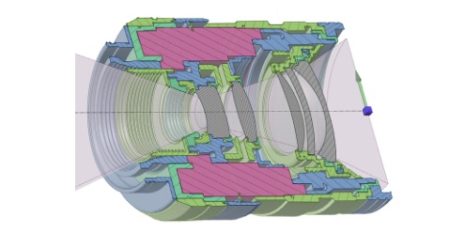Folks know the ACIS modeling kernel from the applications it powers. In the Apple Mac community this might be tools like form.Z or Ashlar’s Cobalt industrial design CAD tools. Yet Spatial’s modeling kernel technology expands beyond just ACIS and includes more components.
Beyond ACIS
While the 3D ACIS geometry modeling kernel is still the core offering, Spatial’s 3D InterOp, CGM Polyhdra and CGM Core Modeler are all important elements. The new 2017 1.0 release offers software developer customers and their end users a more robust and innovative set of features and functions, such as the new incremental Boolean approach related to automated backups.
3D InterOp is technology that helps developers and customers deal with the facts of life in a multi-CAD world. In today’s complex workflows and global teams, single-CAD environments are fast becoming a thing of the past, and CAD ISVs need their tools to handle interoperability better than in the past.

01 – Spatial’s latest 2017 1.0 update to its 3D ACIS Modeler and companion technologies add many benefits for their ISVs and their end users.
Model-based definition (MBD) is technology in 3D InterOp that is core to translation between CAD formats and systems. In this latest release, Spatial extends support for STEP AP 242. Product manufacturing information (PMI) is also now supported for reading SolidWorks files, including both graphical and semantic information. Support for user-defined attributes or meta data to applications importing models through 3D InterOp is also in this update.
In CGM Polyhedra the latest release adds surface recognition capabilities which can identify cones, cylinders, spheres, and toroids from tessellated data, this provides ISVs and their applications new abilities to convert these to precise representations where subsequent geometric operations can be performed. CGM Polyhedra also adds powerful healing capabilities that identify and solve issues in tessellated data that other polygonal modeling tools cannot handle. CGM Polyhedra is an add-on to the core ASIC Modeler.
In CGM Core Modeler the latest release adds expanded feature recognition to enable log, slot, and pocket recognition, allowing customers to use feature recognition on parts and models to identify entities in order to focus on or remove them for downstream operations. Spatial has also extended the benefits of the CGM Core Modeler to Linux users, as well as to C# application developers.” This release of CGM also delivers a robust NURBS conversion utility and additional conversion options for applications which use only NURBS surfaces for downstream engineering workflows.
3D ACIS
For the 3D ACIS Modeler the latest release boasts new workflows for Boolean operations and can solve additional complex cases involving massive numbers of entities in a model, even when they may be outside of tolerances. The new options allow ISVs and their users to automate as much of the workflow as possible, while enabling iterative engagement on problem areas and serve as a foundation for even more Boolean empowerment in future releases.
The 3D ACIS Modeler is a proven solution employed in over 350 applications with over 3 million seats worldwide. To learn more about Spatial go here: www.spatial.com



Reader Comments
[…] Source link […]
Comments are closed.